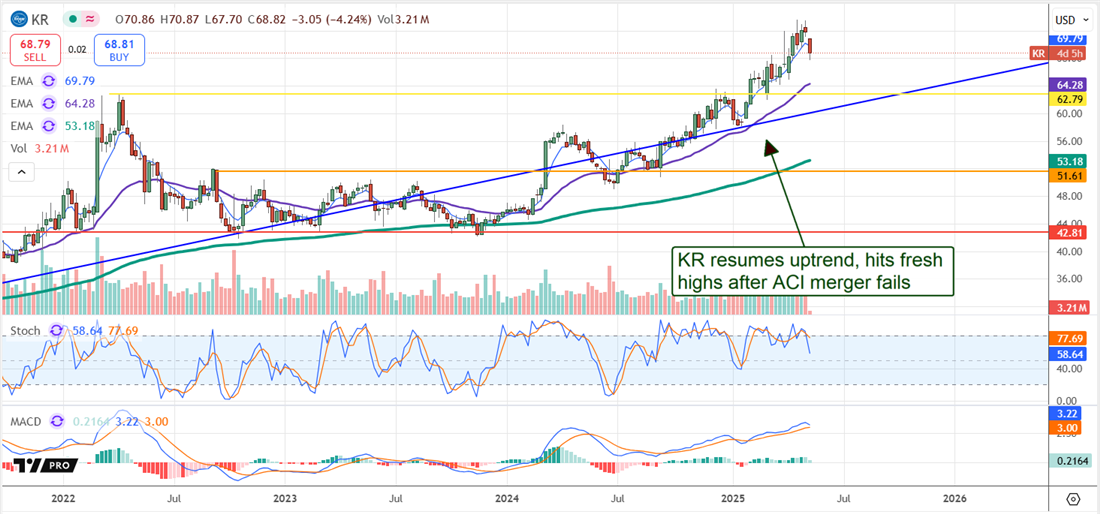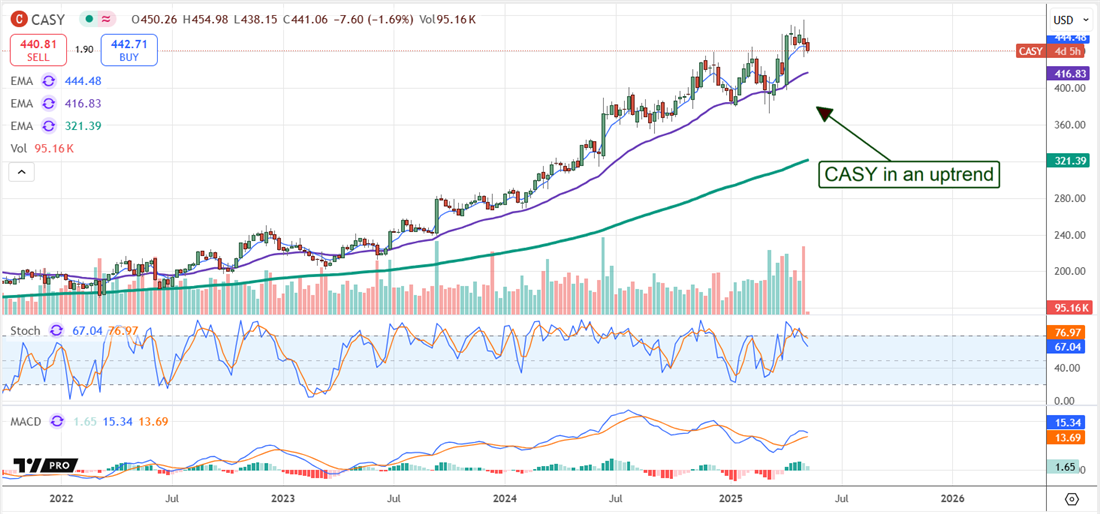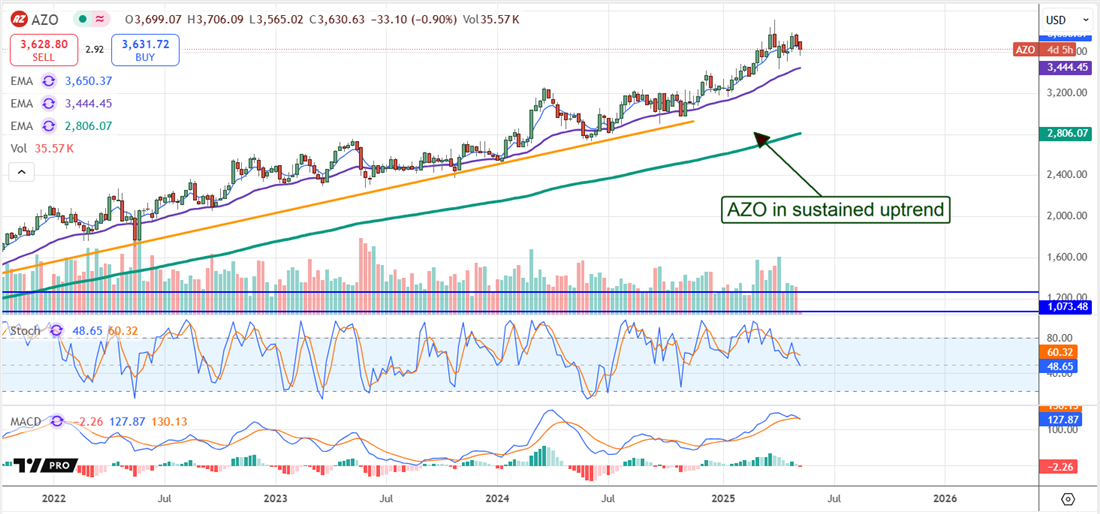The stocks on this list are not high-flying tech names, shoot-for-the-moon startups, or even high-growth names, but they are quietly crushing it for investors. Kroger (NYSE:), Caseys General Stores (NASDAQ:), and AutoZone (NYSE:) are all well-established businesses growing at steady and sustainable paces, driving reliable cash flow in good times and bad. The quality of their operations is clearly seen in their share prices, which are trending upward and outperforming the broad market in 2025.
The outlook for 2025 is for their fundamental trends to continue and for shareholders to continue to win. Is there still meat on the bone for new investors? The answer is yes.
Kroger, Arguably Better Off Without Albertsons
Kroger’s failed takeover of Albertsons (NYSE:) was a blow to the outlook, but the company is arguably better off without it. The new, leaner Kroger is performing well and is set up to deliver significant capital returns to investors while investing in its organic growth. The capital return in 2025 includes a $5 billion accelerated plan compounded by the $2.5 billion remaining on the existing authorization.
The ASR should be completed by the end of FQ3 and will shave a solid double-digit figure off the share count. The reason for the ASR is simple: Kroger amassed a significant capital position in preparation for the Albertsons takeover and is now disbursing it.
Kroger’s FQ4 2024 results showed contraction, and the FQ1 2025 results may show the same, but these are not the figures investors should be focused on. The reported contraction is due to a tough comp to 2023 and divestitures intended to position the company for the merger and growth.
The organic, adjusted comparable figure, which investors should focus on, rose by a modest single-digit figure in Q4 2024 and is expected to do the same in 2025. Additionally, the company is forecasted to return to growth this year and may exceed expectations due to the low bar set by analysts. Kroger also pays an above-average, reliable dividend with a history of attractive distribution growth, another driver of the stock price in the long term. 
Casey’s General Stores Is Growing and Building Leverage for More
Casey’s General Stores is growing via acquisitions, organic store count expansion, and improving comp store sales. The critical factor is that the expansion is primarily self-funded and allows for sufficient cash flow for dividends and share buybacks. The driver in F2025 is the acquisition of Fikes, which boosted revenue growth to 17% in Q3. Organically, comp sales were up, with inside sales up 3.7%, fuel gallons up more than 1%, and margin improving for both.
Casey’s did not repurchase shares in FQ3 due to the capital requirements of closing on Fikes, but will likely resume them in the current quarter or early in fiscal 2026. As it is, the share count was down slightly at the end of Q3 on a YTD basis, and the company has nearly $300 million left under its authorization.
Casey’s is also a reliable dividend payer with a payout ratio of almost 15% of earnings and a high probability of extending its 25-year history of annual distribution increases to the 50-year mark. 
Autozone Share Buybacks Keep It in the Buy Zone
Autozone is the leading retailer of replacement and aftermarket parts, accessories, maintenance, and care products for automobiles in the U.S. It also has substantial and growing exposure to markets in Mexico and Brazil, which helps it sustain a modest single-digit growth pace. The critical factors are cash flow, which supports and sustains the growth outlook, a fortress balance sheet, and aggressive share buybacks.
Autozone chooses not to pay dividends but instead uses its free cash flow to repurchase shares, reducing the count by more than 3.25% YOY in FQ2. The pace will likely continue because the company has $1.3 billion left under its current authorization, enough for another year of buybacks at the Q2 pace, and cash flow is expected to remain solid.
The forecast for F2025 and 2026 is for growth to continue at a modest single-digit pace, underpinned by steadily rising count and steady to increasing comp sales. 
